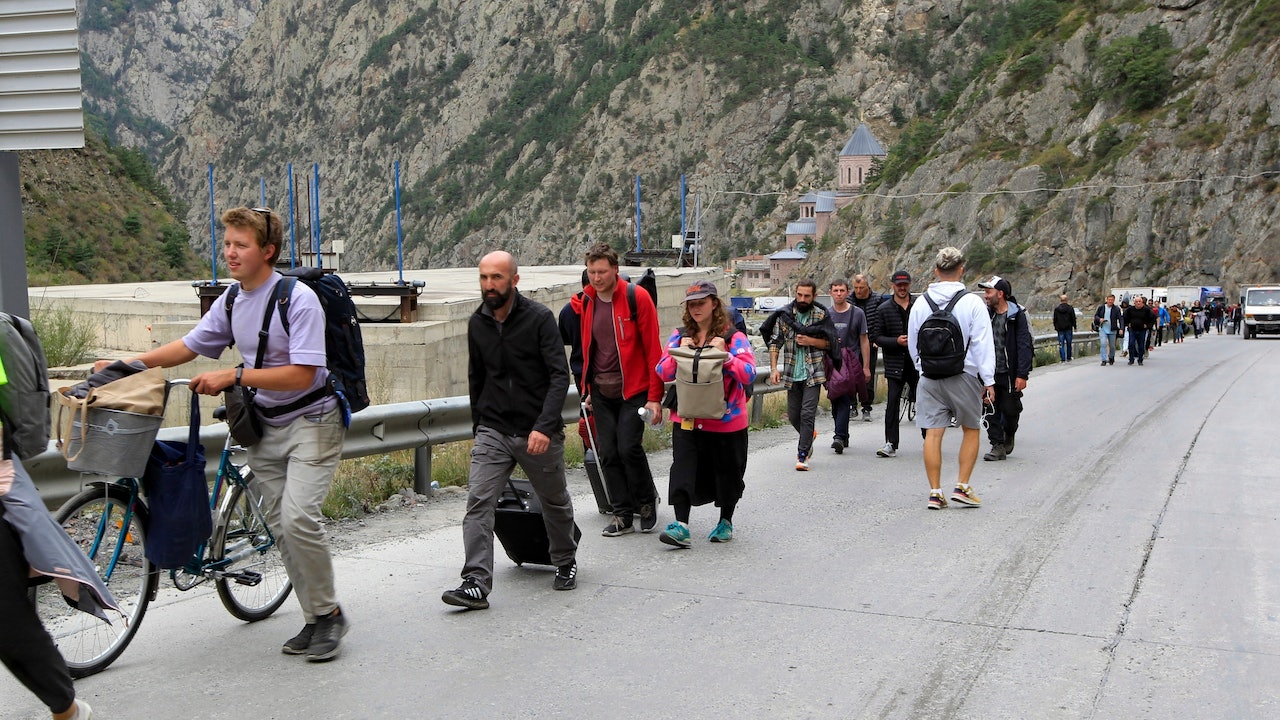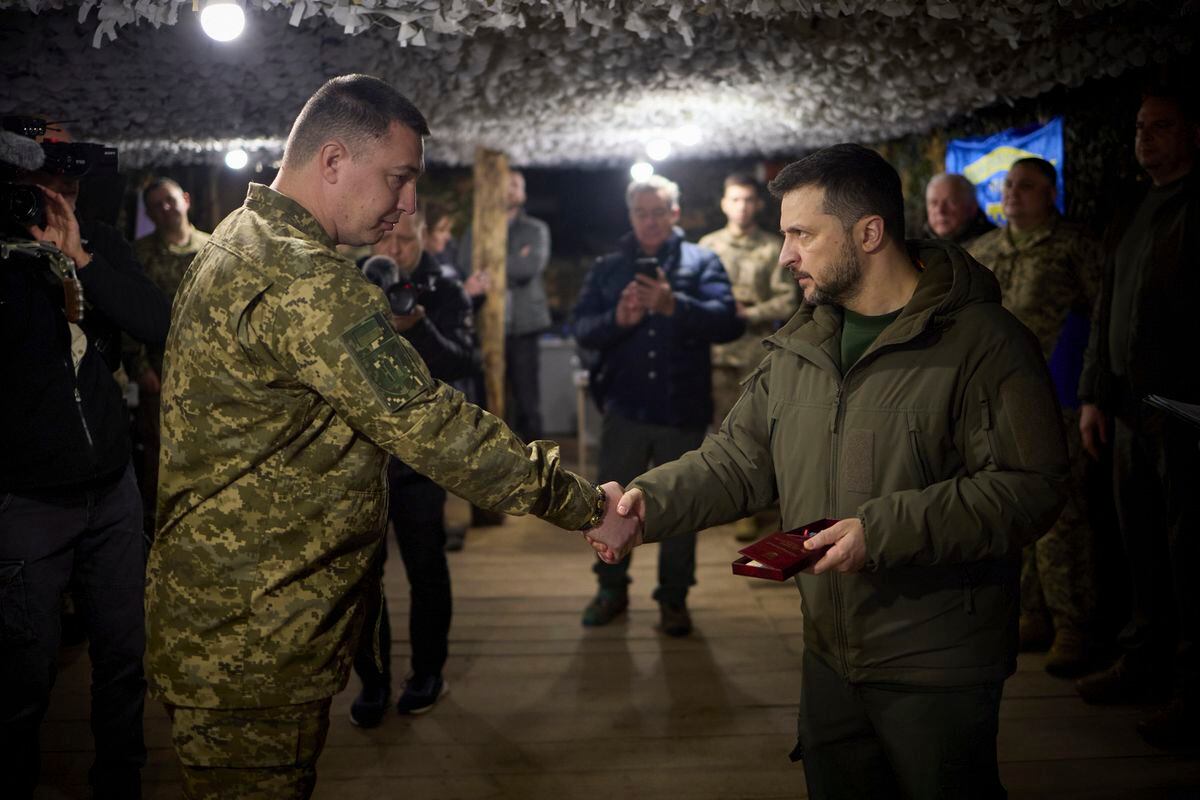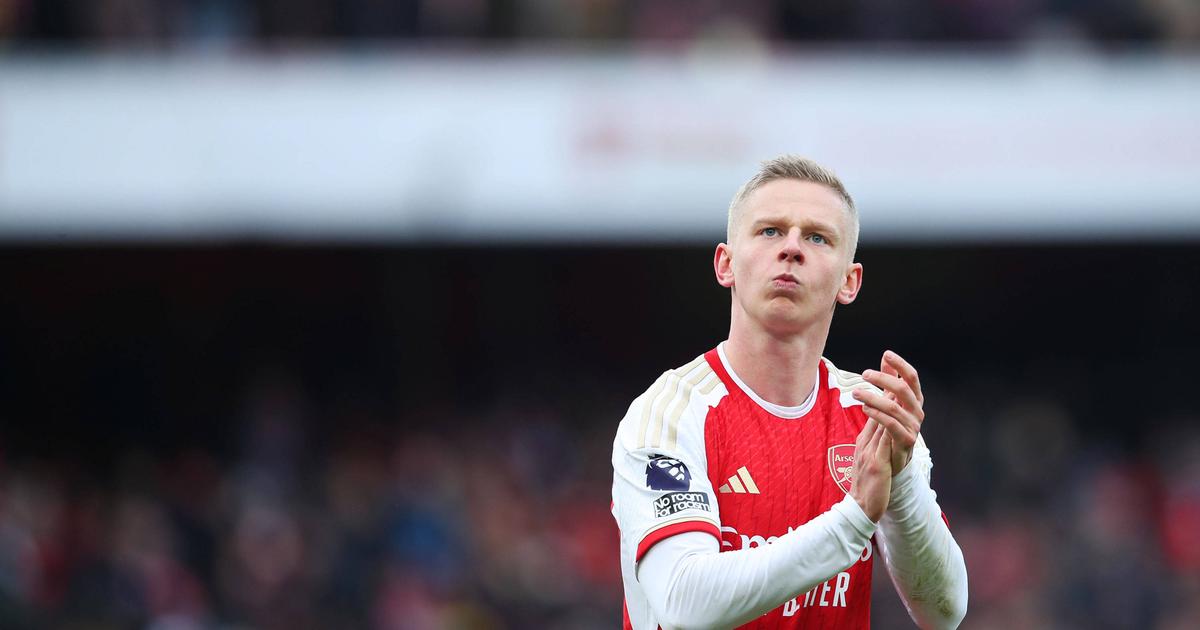Since Russian President Vladimir Putin announced "partial mobilization" on September 21, attention has quickly shifted to how Russians are fleeing military service.
Tickets for direct flights from visa-free entry areas are sold out, queues at the border, private jet seats have become means of escape, and there are companies chartering flights for employees to leave, and so on.
Of course, from a broad perspective, this does not mean that no one in Russia has volunteered to go to the Ukrainian front to fight for Putin, but this flurry of exodus does show that war weariness is widespread in Russia.
According to the Associated Press, more than 194,000 Russians fled to Georgia, Kazakhstan and Finland between September 21 and 28.
And that's not counting other popular destinations like Turkey and Mongolia.
The Kazakh side said on the 27th that about 100,000 people entered Kazakhstan, and Georgia said that the number of daily crossings reached 10,000.
Another independent media outlet operating overseas, Meduza, said on the 26th that official Russian data showed that 261,000 men had left Russia.
The implementation of the mobilization order also caused a lot of confusion in various places, and even the right-wing nationalist commentators on TV could not help but criticize.
According to the official statement of the "partial mobilization", the number of mobilizations is 300,000, all of which require people with military experience, and students, etc. can be exempted.
But the mobilization order signed by Putin did not mention "partial", and the terms of the mobilization number were not made public.
Since Moscow seems to be giving the local government a mobilization quota, some people who have never joined the army, are obviously disabled, are older than the prescribed age, and are in school are also being drafted into the army.
A satellite photo of the Russia-Georgia border on September 27 shows a long queue of vehicles.
(AP)
Kremlin spokesman Dmitry Peskov publicly admitted the mistake on the 26th, saying that the heads of various places are taking the initiative to correct it.
Regarding rumors that Russia will block the border and implement military law, he said that there is no official decision on this.
Although the Russian state media has repeatedly reported the news that the ineligible and conscripted people were finally released, the local situation is still different from the official position - for example, the military commissioner of Novosibirsk said on the 27th that there was no Those who have entered the army can also be considered partially qualified, and Yufa can be drafted into the army.
By the 28th, North Ossetia, which borders Georgia, declared a high alert, banning the entry of wheels from the rest of Russia.
Authorities claim that 20,000 people have crossed the border into Georgia in the past two days, and the local government has been unable to maintain order.
Previously, it was reported that checkpoints had been set up on the Russian-Georgian border, on the one hand, to drive back those who had been recruited, and on the other hand to issue call-up letters to those on the border.
Demonstrations took place across Russia, including Moscow, on the day the "partial mobilization" order was announced.
According to the Russian human rights organization OVD-Info as of the 26th, more than 2,400 people have been arrested.
Some of the buildings used for conscription were set on fire, and some personnel responsible for conscription were shot.
After some protesters were arrested, they were immediately issued a call for papers - which Kremlin spokesman Peskov said was not illegal.
On September 21, a reactionary demonstration in Yekaterinburg, Russia's fourth largest city, was subdued by the local police.
(AP)
While Putin has indicated that recruits will need more training before being sent to the battlefield, Ukrainian military sources and social media sources cited by Washington think tank the Institute for War Studies (ISW) appear to indicate that some freshly drafted recruits have already been brought in. in the frontline army.
Some analysts believe that due to the shortage of front-line personnel in the Russian army, recruits will serve as positions with lower technical requirements and complete training in the army "learning by doing".
In response to this situation, the outside world inevitably has to ask a question: Can the forced recruitment of recruits who are unwilling to participate in the war and undertrained to enter the battlefield really change the situation of the war?
On the battlefield in Ukraine, there are currently three main points.
One is the northeastern Kharkiv-Lugansk region.
After capturing 6,000 square kilometers of territory in early September, the Ukrainian army is now attempting to encircle Lyman, north of Donetsk.
The advancement of the Ukrainian army is very obvious here. If Liman falls, the Russian army will lose the layout of the Donetsk-Ukraine-controlled area from the north, and the Luhansk Oblast, which has a large portion of its territory, may also face Ukraine. Army counterattack.
The second is the Siversk-Bakhmut line of defense in Donetsk.
The Ukrainian army has been guarding here for many months, but the Russian army is still advancing slowly.
As of September 28, the Ukrainian battlefield situation map, the light blue part is the territory recaptured by the Ukrainian army counterattack in the past two months.
At present, the land controlled by the Russian army accounts for about 15% of the territory of Ukraine.
(ISW)
The third is Kherson in the south.
The Ukrainian army has launched a counter-offensive here for more than a month. The bridge traffic on both sides of the Dnieper River has been cut off earlier, and the Russian army in the city of Kherson on the west bank is in danger of being independent.
U.S. intelligence said local officers had requested a retreat, but Putin vetoed it.
At present, the Ukrainian army is showing a slow advance here.
One of the main reasons for the loss of the Russian army in Kharkov in early September was the lack of personnel, and the elite troops were transferred to Kherson in the south for reinforcement.
This also explains why the Ukrainian army was able to dash forward in the northeast, and the situation in Kherson was difficult, but the Russian army still defended.
The reinforcements sent to Kharkov before the Ukrainian army rushed forward were another team of recruits.
In fact, before this "partial mobilization", the Russian side had been using the enlistment bonus of several times the average monthly salary as a solicitation for many months. By June and July, more than 10,000 people had been recruited to form the Third Army Corps. After training left and right, they are sent to the front line.
It was this new army that was defending Kharkov.
In the face of the Ukrainian attack, this team fled, leaving behind a lot of Russian-made equipment for the enemy.
Situation at a conscription camp in southern Russia.
(ISW)
Some might see Putin's "partial mobilization" as a sign that Russia is ready to start a decisive battle against Ukraine this winter.
But as Kharkov's example shows, recruits are not necessarily useful by themselves.
Moreover, the difficulty of the Russian army is not only the shortage of personnel, but also the lack of cooperation between various armies, the inability to obtain air superiority for a long time, and the increasing shortage of more advanced weapons.
Russia's only advantage is that it has a lot of traditional artillery and ammunition.
However, in the case of the "HIMARS" multi-barrel rocket launcher that the United States has just doubled to aid Ukraine, the new personnel alone cannot quickly reverse the situation on the battlefield.
The recent developments on the battlefield have little to do with the number of personnel.
First, after two or three months, Russia has been able to gradually solve the threat of "Haimas" to its rear ammunition depot.
In the past, Russia put together all the ammunition that depended on railway transportation, so that the "Haimas" could have a long-range concentrated attack target, but now it is said that a logistics adjustment for decentralized storage of ammunition has been found, so that the "Haimas" can no longer be large. Reduce the artillery bombardment of the Russian army on the front.
In the aforementioned Donetsk Bakhmut area, this change has allowed the Russian army to continue its slow advance recently.
Another is the emergence of Iranian drones.
Ukrainian radars are difficult to detect, and US stinger anti-aircraft missiles are not cost-effective to attack.
However, the latest U.S. military aid has deliberately included radar systems for drones.
A conscripted Russian man kisses his lover goodbye.
(AP)
While mobilization probably won't turn the tide on the battlefield in an instant, the increase in personnel is likely to be a deployment for the coming winter.
Due to the cold winter in Ukraine, the advance of the two sides on the front line is expected to be very limited, which gives Russia time to strengthen its defense with a numerical advantage, train new recruits, build fortifications on the existing front line land, and deploy the next wave of offensive in the next year.
Putin's consideration is likely to be: Even if Europe can survive this winter, if it is clear that the war will continue indefinitely, will the support of Europe and the United States hold up?
As for sending unwilling recruits to the battlefield, Putin probably has nothing to worry about.
Even if ordinary soldiers and their families and friends have serious dissatisfaction with the mobilization order, no one in Russia can organize such an opposition force.
Soldiers on the battlefield often do not fight for their country, but for their peers.
When a person who does not want to fight is put on the battlefield, he will naturally play the role of a soldier.
In the past few months, there have been reports in the media that the troops in the Donbas region have recruited or even forced local Ukrainians to join the Russian army, and there have also been cases of Ukrainian residents in front-line towns encountering Ukrainian soldiers from Donbas in the Russian army.
These stories prove that soldiers who do not want to fight will still have a certain contribution to the army after playing their role as soldiers.
Stalin is said to have said: "Quantity is a quality in itself." The authenticity of this sentence will once again be verified on the battlefield in Ukraine.
The Russian-Ukrainian War | Who is the mastermind behind the Beixi explosion?
Blurred Russian-Ukrainian War of War Escalation Lines | Is the "going through the motions" of the Russian entry referendum to clarify Putin's ambition?
Russia-Ukraine situation︱The United States announced an additional $1.1 billion in military assistance to Ukraine︱Medvedev: Russia has the right to use nuclear weapons if necessary




/cloudfront-eu-central-1.images.arcpublishing.com/prisa/DFEYM4VDIVGR7IYA2GDBROC7VQ.jpg)



/cloudfront-eu-central-1.images.arcpublishing.com/prisa/VA3WQRJI66MMREDDI2GEEEHW7E.jpg)
